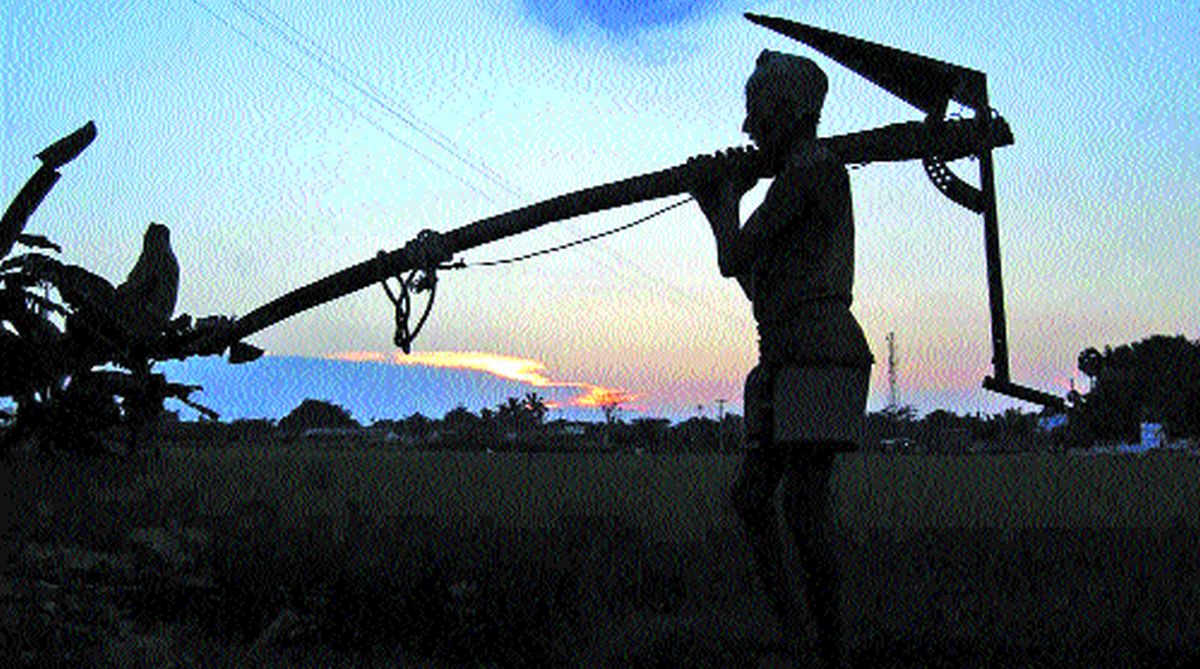Jal Jeevan Mission milestone: 13 cr rural households connected to tap
The Jal Jeevan Mission (JJM) on Tuesday achieved another milestone of providing tap water connections to 13 crore rural households.…

Representational Image.
If there is one section of our rural population which deserves the most care and yet has been neglected the most, it is the section consisting of rural landless people. In the case of farmers too there has been a lot of injustice but at least this is being talked about.
But although the rural landless are without doubt the poorest people in the country there is hardly any discussion about them. The issue of greatest relevance for them – land distribution and the wider issue of land redistribution – were first pushed to the margins and has now been pushed even further away so that no one in government even talks about them.
Advertisement
However, there is little doubt that these issues are very important if longer term, sustainable solutions to the most basic problems of hunger and poverty are to be found. Evidence from all over the world points to the fact that even a small piece of cultivable land adds significantly to the food security of rural poor households.
Advertisement
It is in this wider context that the proposal for a law ensuring minimum land holding for all long-term resident rural households acquires many-sided significance. Such a law could lay down, for instance, that all long-term residents of a village will have rights to homestead land and at least an acre of cultivation land. However, the size of the land holding can differ in hill and plain areas, and in irrigated and desert areas.
Such a law would have been justified at any time on the principle of social justice, but its importance has increased at a time of widespread assault on farmland as this measure could give minimum security not only to landless people but also to others now threatened with landlessness. Even when such an assault cannot be stopped, such a law could compel authorities to ensure that at least a minimum land base of a family is not disturbed (or has to be provided at another nearby place).
The assurance of a minimum land base for all rural households will provide multiple benefits.
o This will help significantly in poverty alleviation and food security in the context of the poorest families and thereby help in achieving top priority national goals.
o This will help poorest families to explore additional livelihood opportunities including food crop production, animal husbandry and cottage scale crafts.
o This will improve health and hygiene of poorest families as they have space for toilets, bathrooms and a separate place for dairy and other animals.
o This will strengthen rural communities as without a land-base some of the most hard-working families can be easily lost to the rural communities in these times of greater dependence on migrant labour.
o Several rural households have said that even a small plot of land gives them a certain social dignity.
Hence the proposal for a minimum land holding deserves immediate attention as a means of promoting food security, poverty alleviation, social security, health, hygiene and community ties.
This issue should be linked to the other pending issue of homestead rights for all rural households. Due to denial of homestead land to hundreds of thousands of rural people, they live in precarious and uncertain conditions.
Sometimes the real or claimed ownership of the land on which they are living by big landowners ties the poor to a relation of bondage with them.
Although official reports have referred to right to a roof over one’s head as a basic human right these have also admitted that an estimated 13 to 18 million families in rural India today that are reported to be landless of which about 8 million lack homes of their own. They live either in spaces provided by landlords (in case of farm labour), or on government land, or on village common land, or in other insecure situations.
Homestead land with full legal rights, preferably with some space for kitchen gardens, should be assured to all rural poor households. This can be done through either allotment of government land, ceiling of surplus land etc. or purchase of land from the market and their allocation to the homeless poor.
Reports from several places have revealed that where adequate land has been provided for kitchen gardens near homes, poor rural households and in particular women have made creative and productive use of this space and opportunity to contribute significantly to the nutrition and food security of their family. This aspect should be kept in mind while deciding about the size of the homestead land.
The writer is a freelance journalist who has been involved with several social movements and initiatives.
Advertisement